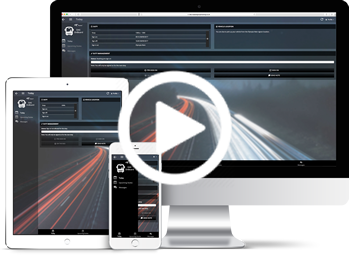ITxPT: Technology Standards for Public Transport
Information Technology Standards for Public Transport: Delivering greater intelligence, automation and responsiveness in the delivery of mobility
Executive Summary
Local and regional authorities routinely contract out services to transport operators with a diverse range of vehicles and system suppliers. To ensure a consistently high level of service delivery for passengers, and to facilitate flexibility in terms of upgrades without incurring additional cost, it is vital that all the different systems work together.
Open standards are a central tool for ensuring that such systems are able to easily interface with one another. The use of standards improves ease of testing, reduces development and overall costs, and provides a simpler path for system migration.
Information Technology for Public Transport (ITxPT) supports the implementation of standards and procedures for integrated ‘plug-and-play’ IT systems for public transport and the relevant back-office functions. By developing, maintaining and advancing these standards and practices, ITxPT supports integrated and standardised mobility services for the public, sustainable mobility for all, and full interoperability between different IT systems and solutions.
ITxPT promotes improved cost efficiency of IT systems and their deployment, while ensuring openness and continuous competition in the public transport IT market.
While ITxPT is now becoming widely adopted, it continues to evolve with new versions and also upcoming specifications such as electric vehicles, demand responsive transport and more.
In this paper we outline where ITxPT came from and where it is now, and how authorities and operators can start to use it; and explain how Trapeze is collaborating with this group to pave the way for innovation and flexibility in public transport at a level not previously possible.
An ITxPT Principal Member, Trapeze is helping to drive the development of ITxPT through committees and working groups. Our Intelligent Data Router is ITxPT labelled.
About Information Technology for Public Transport (ITxPT)
The ITxPT organisation emerged from the European project EBSF (European Bus System for the Future). Founded with nine members in 2013, it has grown rapidly in the years since. The organisation is independent and registered as an international non-profit association. However, it has strong links with UITP (which was a founding member and is Chairman of the Board of Directors), and is a very active group with many public transport companies involved.
Initial Situation and Goal
Historically, public transport systems have mainly had to rely upon proprietary solutions. Many of the systems require location information, engine management data, and communications for their own back-end system. This has led to the implementation of parallel infrastructure that has occasionally resulted in extreme situations, such as vehicles with as many as six on-board computers and six antennas, each requiring complex cabling (Figure 1).
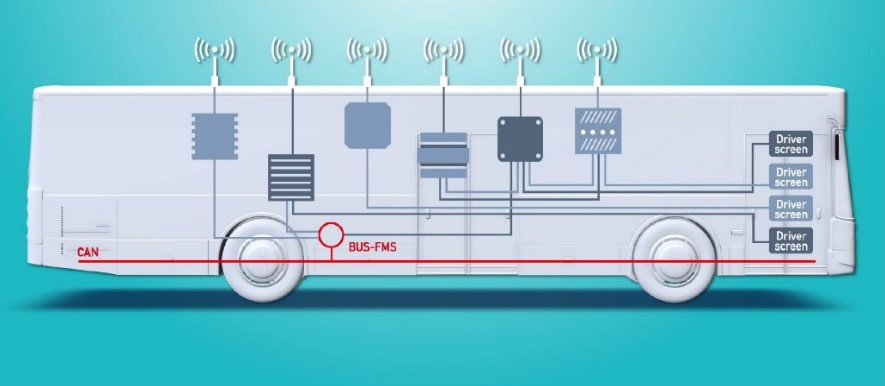
Figure 1: Legacy with “silo”/proprietary systems: Many data streams run in parallel, with several displays installed at the driver’s end
To address such extreme examples, the goal for IT systems of the future is a truly open architecture based on defined standards. After the integration of various devices in the vehicle, we should end up with one communication gateway and one antenna for the vehicle, with multiple systems in use that can communicate with their own back end.
Ultimately, this will result in an integrated network for the monitoring and management of all devices, and the integration of all systems, including visual and acoustic passenger information, support for people with disabilities, automatic passenger counting, ticketing, traffic light priority, multimedia systems, CCTV, safety and anti-collision systems, and driver breathalysers.
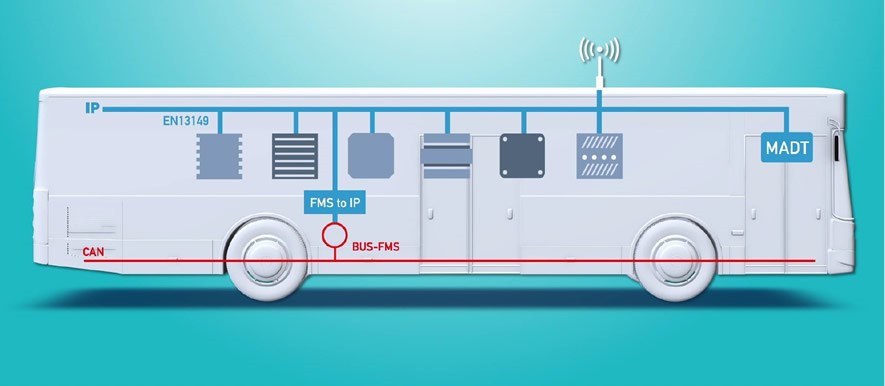
Figure 2: Integrated architecture with ITxPT: data streams are bundled with one display installed for the driver
The ITxPT Solution
ITxPT is an architecture for interoperability designed by a community of IT suppliers, vehicle manufacturers, transport authorities, and public transport operators from around the world. ITxPT supports the implementation of standards and procedures for integrated ‘plug-and-play’ IT systems for public transport, and the relevant back-office functions.
ITxPT not only brings cost benefits; it also improves services for passengers by making it easier to deliver real-time information and eliminating islands of proprietary technology, as has been the case in the past. Because ITxPT supports innovation, passengers should benefit in ways we have yet to even consider. There are four main areas that ITxPT seeks to influence to achieve this:
- Installation requirements (for vehicles and hardware modules)
- On-board architecture (architecture of the function blocks in the vehicle)
- Back-office architecture (architecture of the control centre)
- Over-the-air architecture (communication protocol)
Each area of the standard may contain several specifications.
The on-board installation requirement includes interfaces for:
- Power supply with a defined common plug
- FMS interface to make CAN bus data available
- Audio interface with signals available and plugs to be used
- Wireless communications interface with common connectors
- Auxiliary interfaces for battery, odometers, door open, stop request and more
- On-board IP network, including ethernet plugs and cables
- How these various interfaces are presented in an enclosure
The on-board architecture has specifications for:
- S02P00 Networks and Protocols
- S02P01 Inventory
- S02P02 Time
- S02P03 GNSSLocation
- S02P04 FMStoIP
- S02P05 VEHICLEtoIP
- S02P06 AVMS
- S02P07 APC
- S02P08 MADT
- S02P09 MQTTbroker
An increasing number of new vehicles will be ITxPT compliant and ready for fitting ITxPT compliant modules. However, functionality will also be needed to cover existing fleets. The minimum requirements for retrofitted vehicles with ITxPT compliant architecture are:
- On-board Backbone IP Network using Standardised ITS Architecture (EN13149)
- Vehicle Communication Gateway – VCG
- GNSS Location service
- Multi-Application Driver Terminal – with MADT service (if driver display is required)
How to Tell if a Device is ITxPT Compliant
Compliant devices will show an ITxPT label. The ITxPT label provides a ‘seal of quality’ which certifies that devices, software or services comply with the technical specifications. As standards and specifications leave room for interpretation, it is often the case that a single standard can lead to several implementations – which means there is a risk that interoperability may not be ensured. The labelling system avoids this situation by having a common site that interprets the standards.
As new devices are developed, labels can be applied for to declare compatibility with ITxPT specifications (Figure 3). Special laboratories in Paris and Gothenburg are available for this purpose, where clearly defined processes must be followed.
At the time of writing there are now around 60 labelled modules in the ITxPT catalogue, though it should be noted that only five of these have the AVMS service – of which Trapeze’s Intelligent Data Router (IDR) is one.
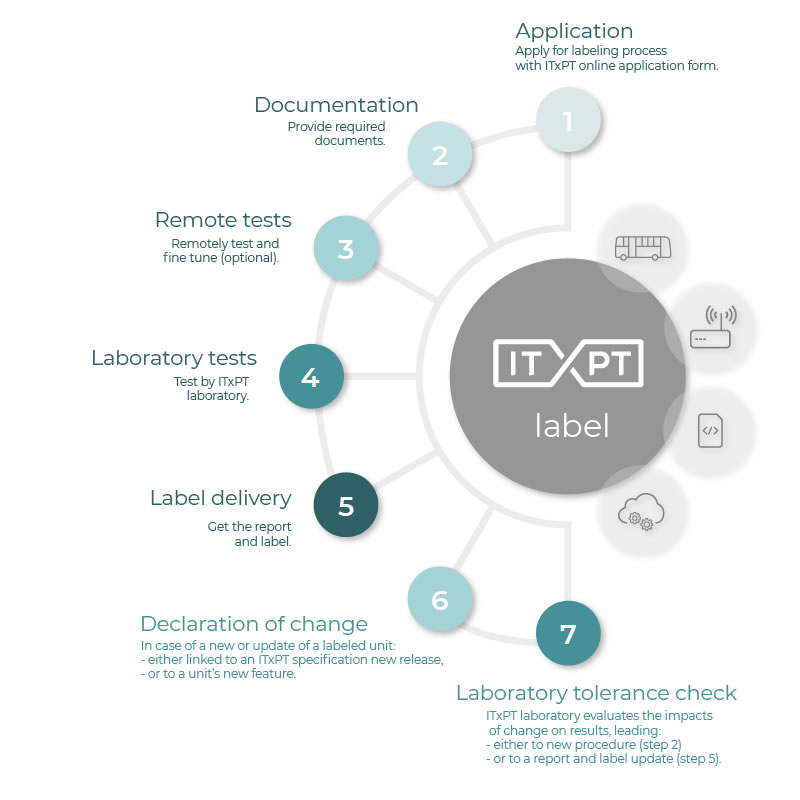
Figure 3: The ITxPT labelling process
Trapeze and ITxPT Labels
ITxPT is broadly based and aims to standardise all aspects of IT systems in public transport. There is still much to do. The standards achieved so far offer an excellent basis for standardising the hardware and platforms used in vehicles. However, a fully modular Automatic Vehicle Location and Control (AVLC) system, in which the application software of several providers seamlessly interacts, remains a vision for the future.
Work is still required, for instance, to harmonise content management systems for passenger information systems, and to ensure that ITxPT protocols support powerful cybersecurity features.
The systems integrator plays a key role in making this happen within modular systems, and Trapeze as a leading supplier, with many decades of experience, is particularly well suited for this. An ITxPT Principal Member, Trapeze is helping to drive the development of ITxPT through committees and working groups.
The labelling for the Trapeze Intelligent Data Router (IDR) was successfully carried out in Paris in 2019. This complies the ITCS vehicle hardware (interfaces, cables, etc. (S01)) and basic software with a range of different services (S02):
- The hardware meets the basic requirements (S01)
- The following software services (S02) were labelled:
- Module Inventory (module status)
- Time (time reference)
- GNSS (location)
- FMStoIP (CAN-FMS IP based)
- VEHICLEtoIP (data from vehicle computer)
- AVMS – Advanced Vehicle Monitoring System Services (ITCS data)
- MQTT broker
Trapeze has also developed and deployed, but not yet labelled, the APC service. This makes the IDR suitable for both new and retrofitted ITxPT applications, and significantly limits customer risk during the integration phase.
The ITxPT standards are evolving. Trapeze is not only implementing these additional standards; our field experience of integration with other vendors is also now flowing back in to the evolution of standards. For example, the APC standard was established with the contribution of Trapeze, and is now supported in the Trapeze IDR.
With eyes now trained on 5G rollouts, there is also the development of standards that support a data-centric model, rather than a service-oriented model. This makes it possible to achieve a range of services on the vehicle using lightweight appliances and shared, high-speed communications.
Conclusion: What You Should Do About ITxPT
There is now sufficient critical mass for transport providers to push for the use of the ITxPT standard on all in-vehicle and peripheral purchases. Leading bus manufacturers are ITxPT ready, with new buses pre-wired. Many industry leaders have already developed hardware to the ITxPT standard, and more are becoming labelled.
As a local or regional authority or transport operator, it is in your interest to specify that the ITxPT label is required in any future tender or specification. This will result in greater cost efficiency through a reduction in cabling, antennas, driver terminals and more; and set up your public transport system to be supported by empowered suppliers ready and able to deliver innovations that result in better services to your passengers.
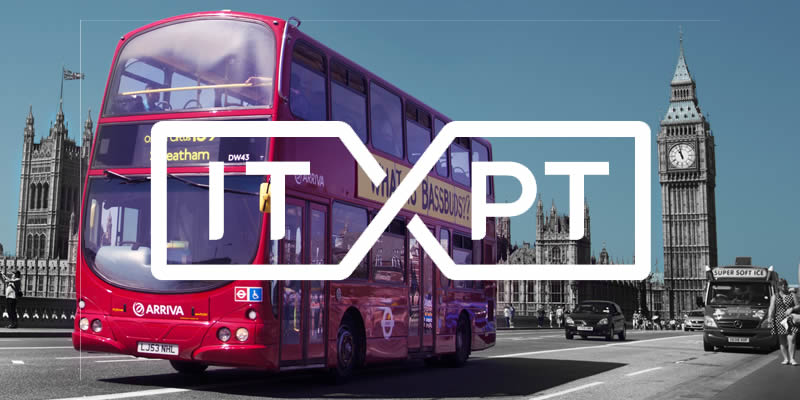
Here to help
Contact us and speak with one of our specialists:
+44 (0) 808 281 1039
More Info
About Us | Careers | Contact Us | Legal | Privacy
(c) 1999 – 2021 Trapeze Software ULC. All rights reserved
Trapeze Group respects your privacy

